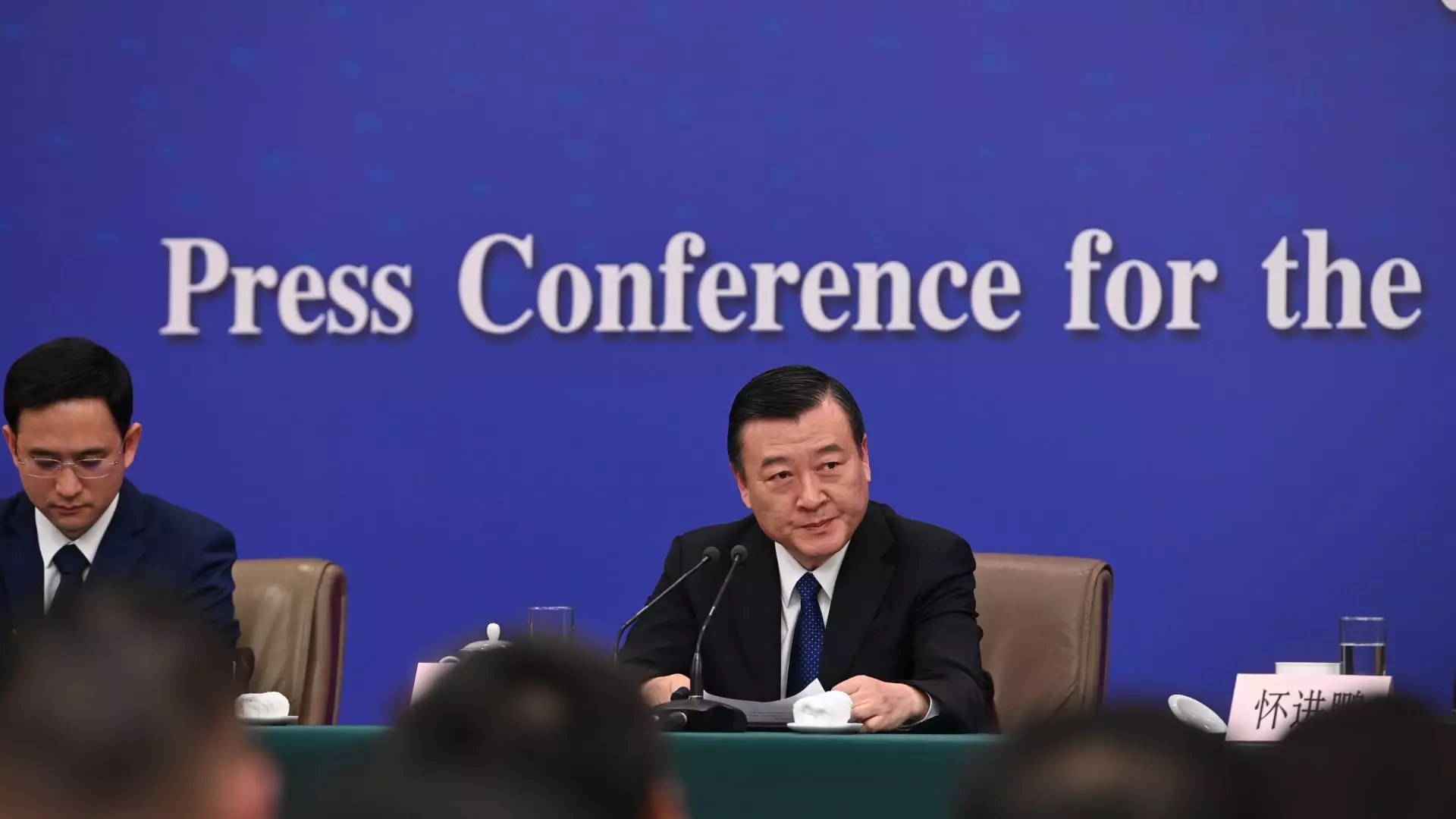The Chinese real estate sector, a crucial pillar of the national economy, has been grappling with significant challenges since 2021. Following the government’s stringent measures against high debt levels among property developers, the industry saw a surge in defaults, leading to numerous unfinished projects and eroding consumer confidence. Faced with this crisis, authorities are now taking decisive action to stabilize and rejuvenate the creaking real estate market. The recent announcement from the Ministry of Housing and Urban-Rural Development highlights the intention to expand a “whitelist” initiative aimed at accelerating lending for incomplete housing projects. This effort is set against a backdrop of slower economic growth and waning consumer trust across the sector.
Launched in January, the “whitelist” initiative allows city governments to recommend certain residential developments straightforwardly, enabling banks to provide loans more expediently. This program is crucial in addressing the backlog of unfinished buildings that exists within the country—a situation that has left countless homebuyers in limbo. The announcement from China’s housing ministry indicates that lending through this initiative is projected to surge to 4 trillion yuan ($561.8 billion) by the end of 2024, a significant increase from the 2.23 trillion yuan already approved for whitelisted developers.
Amidst a variety of economic strategies being employed, this specific initiative stands out as a direct intervention to ensure the completion of stalled projects. According to officials, all commercial housing projects are now eligible for the whitelist, which further expands the scope of potential funding. However, the true effectiveness of this initiative will depend on how rapidly banks can mobilize these funds and address the demand for completed housing.
Additionally, the People’s Bank of China has taken steps to enhance liquidity in the financial system. In late September, bank reserves were trimmed, with the reserve requirement ratio (RRR) cut by 50 basis points, alongside a reduction in the minimum down payment for second-home loans—from 25% to 15%. These adjustments are anticipated to stimulate borrowing and spending within the otherwise cautious consumer base.
However, the market’s response has been mixed; for instance, as Xiao Yuanqi, Vice Minister of the National Financial Regulatory Administration, addressed the media regarding funding initiatives, the Chinese CSI 300 real estate index dropped significantly, raising questions about investor confidence and market sentiment. Experts suggest that the uncertainty surrounding the impact of lenient policies has contributed to ongoing market volatility.
Real estate once accounted for a significant share of China’s GDP, but as the sector struggles, the ripple effects are felt throughout the entire economy. The government’s recent moves to augment financial support for housing markets—including plans to allow local governments to issue special bonds for land purchases and permit affordable housing subsidies to fund existing inventory—underscore an urgent desire to spur economic recovery.
Moreover, several cities have initiated policies to mitigate market restrictions; for example, Guangzhou has eliminated home purchase constraints, while Beijing, Shanghai, and Shenzhen have eased buying requisites for non-local residents. Such measures are indicative of a broader strategy aimed at revitalizing interest in real estate amidst a backdrop of declining home prices, which have witnessed their steepest downturn in nearly a decade.
Despite these aggressive policy adjustments, the road to recovery is fraught with uncertainty. Analysts cautioned that the effectiveness of these initiatives may take time to materialize in terms of improved sales volumes and construction activities. While some investors view these interventions as a sign of the government’s commitment to stimulating the economy, growing skepticism remains. The fluctuating stock market captures a broader narrative of apprehension among investors, indicating that without palpable results, confidence in the recovery will continue to wane.
Furthermore, as new home prices fall by substantial margins year on year and with a staggering 23.6% decline in second-quarter sales, it is clear that significant hurdles remain. Addressing the crisis in real estate must involve not just dealing with immediate liquidity concerns but also restoring consumer trust in the market—a task that will be critical for sustained economic recovery.
China’s current endeavors reflect a multi-faceted approach to revitalize its real estate market, showing a commitment from the government to rectify previous missteps and restore economic stability. However, policymakers must proceed with caution, as misunderstanding investor sentiment or the long-standing issues inherent in over-leveraged real estate can lead to further instability. Ultimately, the success of these initiatives will depend on the balancing act of stimulating growth while maintaining financial discipline—a challenge that poses a daunting test for the Chinese government in the months and years ahead.

Leave a Reply